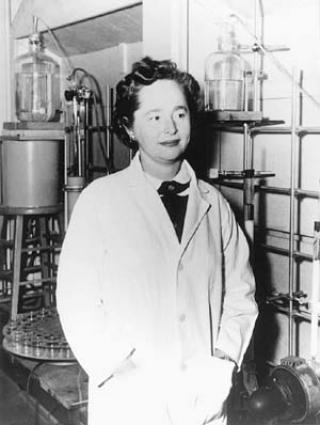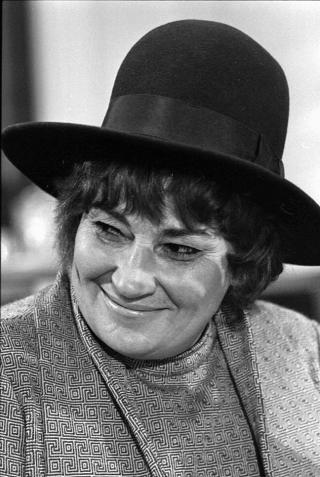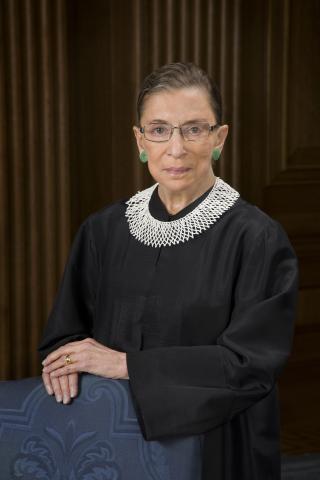Honoring Jewish American Women

Emma Lazarus (1849-1887)
Give me your tired, your poor,
Your huddled masses yearning to breathe free

Most famous for her poem, “The New Colossus,” now engraved on a plaque at the base of the Statue of Liberty, Emma Lazarus was one of the first successful and highly visible Jewish American authors.
Lazarus was born on July 22, 1849 to an upper-class Sephardic Jewish family in New York City. Her father supported her education and encouraged her writing. When she was 17, her father privately published a book of her poems. Shortly after Lazarus sent a copy to Ralph Waldo Emerson who soon became a trusted friend and mentor.
Lazarus used her poems and essays to speak out against the persecution of Jews in Europe and the growing anti-Semitism in the United States and abroad. She also wrote in Jewish publications to argue for a Jewish homeland in Palestine. In addition to writing, Lazarus volunteered at the Hebrew Immigrant Aid Society and visited Russian refugees living in poor conditions in New York City. She also helped establish the Hebrew Technical Institute in New York to provide Jewish immigrants with vocational training and in 1883 she formed the Society for the Improvement and Colonization of East European Jews.
Over a century after her death in 1887, Lazarus’ legacy lives on. “New Colossus” continues to inspire advocates of immigrants’ rights and freedom. Lazarus' activism and writings on anti-Semitism inspired the formation of the Emma Lazarus Federation of Jewish Woman's Clubs in 1951. The clubs were formed to fight anti-Semitism and racism, and sought to foster a sense of Jewish culture and provide leadership opportunities for Jewish women. The organization was later disbanded in 1989.
Gertrude Belle Elion (1918-1999)

Gertrude Belle Elion overcame personal struggles and gender discrimination to become one of the first women to win a Nobel prize in medicine.
Elion was born in New York City on January 23, 1918 to immigrant parents from Lithuania and Russia. Elion became curious about the world around her at a young age and graduated from high school early at the age of 15. Supported by her parents, Elion went on to continue her education at Hunter College, an all-female institution. She explained that among immigrant Jews, "Their one way to success was education, and they wanted all their children to be educated.” After watching her grandfather suffer from stomach cancer, Elion dedicated her career to finding a cure through chemistry research. After graduating with honors, Elion was rejected from every PhD program to which she applied. Despite her academic achievements, admissions committees were unwilling to provide financial aid to a woman. Elion remained determined and despite the shortage of jobs for women in her field, she managed to scrape together enough money working as a teacher and lab assistant to complete her master’s degree at New York University while still working full time. Elion’s commitment to her research was renewed after she tragically lost her fiancé to a heart infection shortly after graduating.
During World War II, many more jobs became available for women in chemistry as men joined the war effort overseas. After briefly working as a food chemist, Elion sought more challenging work and applied for a job working at the Burroughs Wellcome Company with biochemist George Hitchings. Together, Elion and Hitchings developed a groundbreaking process for creating drugs known as “rational drug design” based on their knowledge of how cells function. In addition to developing 6-MP which was used to treat leukemia in children and made organ transplants possible, Elion helped discover treatments for lupus, hepatitis, arthritis, and gout. Along with her colleagues, James Whyte Black and George Hitchings, Elion received the 1988 Nobel Prize in Medicine for their discoveries of important principles for drug treatment.
Elion became the fifth woman to receive a Nobel Prize in Medicine, proving that through hard work and determination women could overcome barriers of gender discrimination to make significant scientific contributions. Despite the obstacles she faced, Elion’s dedication to her research saved and improved the lives of countless individuals.
Bella Abzug (1920-1998)

“Battling Bella” Abzug was a trailblazer for women in politics. She defied stereotypes and convention, loudly speaking out about controversial issues and often clashing with her colleagues in congress. Throughout her life, Abzug was a strong advocate for peace, women’s rights, civil rights, and environmental protection.
Abzug was born on July 24, 1920 in New York City to Russian-Jewish immigrants. After attending Columbia Law School, Abzug started her own law practice and worked on cases defending the rights of workers, immigrants, and African Americans. In the 1960s Abzug spoke out against the Vietnam War and helped start the Women Strike for Peace (WSP) which called for a ban on nuclear testing in the United States. Abzug’s lobbying with WSP led her to run for congress in 1970. She ran on an anti-war and feminist platform, using the campaign slogan “This woman’s place is in the House … the House of Representatives!”
While Abzug often received criticism for being too outspoken and coming across as unwomanly, her tenacity and fighting spirit helped pass important legislation including the Freedom of Information Act which created more transparency in government.
Abzug was an avid champion of women’s rights. She was a sponsor of the Equal Rights Amendment, and helped pass the Equal Credit Act, legislation that provided women with fair access to consumer credit. She also helped pass Title IX regulations that created equal opportunities for women in education. Abzug was a founder of the National Women’s Political Caucus and helped pass legislation that provided funding for the first National Women’s Conference held in Houston, TX in 1977.
In addition, Abzug was a strong advocate for environmental protection. She co-authored the Water Pollution Act of 1972 and in 1990 formed the Women’s Environment and Development Organization (WEDO) to protect the planet and empower women. Abzug became an influential leader at the United Nations and died shortly after giving her final speech before the UN in 1998.
“Battling Bella” opened doors for women around the world. At Abzug’s funeral, Congresswoman Geraldine Ferraro said, "She didn't knock politely on the door. She didn't even push it open or batter it down. She took it off the hinges forever."
Ruth Bader Ginsburg (1933-2020)

Ruth Bader Ginsburg battled gender discrimination throughout her career and made history when she became the second woman, and first Jewish woman to serve on the Supreme Court.
Ginsburg was born on March 15, 1933 in Brooklyn, New York to a Jewish immigrant father and a native-born Jewish mother who instilled in her a love of learning. Ginsburg graduated from Cornell University in 1954 at the top of her class before going on to study law at Harvard University and Columbia University where she made Law Review at each and graduated at the top of her class from Columbia. At Harvard she frequently faced gender discrimination. As one of 9 women in a class of 500, she was often asked to explain how she justified taking a place in the class that would otherwise have gone to a man. Women were sometimes only called on in class for “comic relief” and were even excluded from certain rooms in the library. Ginsburg transferred to Columbia for her last year of law school, after her husband Martin received a job at a New York law firm. Despite her credentials, Ginsburg had trouble finding a job after graduation. In an interview sShe explained that, “in the fifties, the traditional law firms were just beginning to turn around on hiring Jews. … But to be a woman, a Jew, and a mother to boot, that combination was a bit much.”
Ginsburg briefly taught law at Rutgers University, then Columbia Law School where she eventually became the first woman to achieve tenure. While teaching at Columbia she became involved with the American Civil Liberties Union (ACLU) and in 1972 became the first director of the ACLU’s Women’s Rights Project where she worked to eliminate gender discrimination in the law.
In 1980 President Jimmy Carter appointed Ginsburg to the U.S. Court of Appeals for the District of Columbia, where she served 13 years before being nominated to the Supreme Court by President Bill Clinton in 1993. As a justice, Ginsburg continues to advocate for women’s rights. In 1996 she wrote the majority opinion in United States v. Virginia, maintaining that qualified women could not be denied admission to Virginia Military Institute. Following her 2007 dissent in Ledbetter v. Goodyear Tire & Rubber Co., Ginsburg worked with President Barack Obama to pass the Lilly Ledbetter Fair Pay Act of 2009. Ginsburg remained a powerful force on the Supreme Court until her death in 2020.
"Abzug, Bella Savitzky." History, Art, and Archives. United States House of Representatives. 2018.
"Bella Abzug." Jewish Women's Archive. 2018.
"Emma Lazarus." Jewish Women's Archive. 2018.
"Emma Lazarus." Poetry Foundation. 2018.
"George Hitchings and Gertrude Elion." Science History Institute. 2018.
"Gertrude Elion (1918-1999)." American Chemical Society. 2018.
"Gertrude Elion." Jewish Women's Archive. 2018.
"Justice Ruth Bader Ginsburg." The Supreme Court Historical Society. 2018.
Malvina Halberstam. "Ruth Bader Ginsburg." Jewish Women's Archive. 2018.
"Ruth Bader Ginsburg." Jewish Women's Archive. 2018.
"Ruth Bader Ginsburg." Oyez. 2018.
"Ruth Bader Ginsburg Joins U.S. Supreme Court." Jewish Women's Archive. August 10, 1993.
